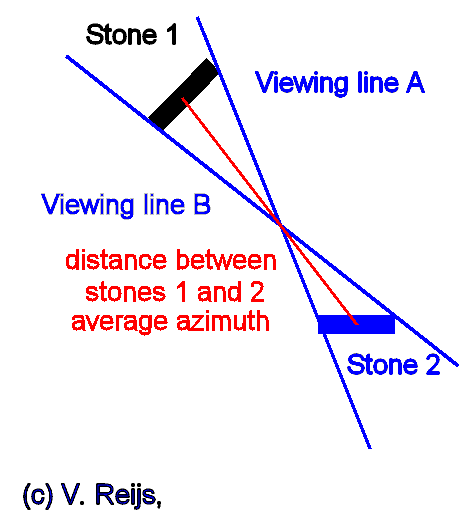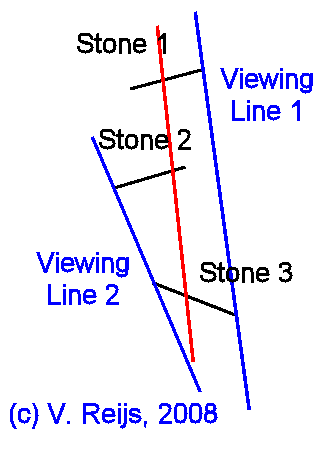So the viewing range depends
on
the
distance between the two objects
(can be stones or
circles) and the effective width of the objects (the
effective width of
the objects is
depending on the average azimuth and the angle of the stone
surfaces). The viewing range does not assume a certain
observation
position.
Also here the celestial object's diameter (like moon and
sun) will
provide the penumbral region and thus effectively the
celestial object
range is at least two times half the object's diameter (0.5°
minimum) in angular width.
A few other
parameters that
determine the
viewing
and celestial object range:


